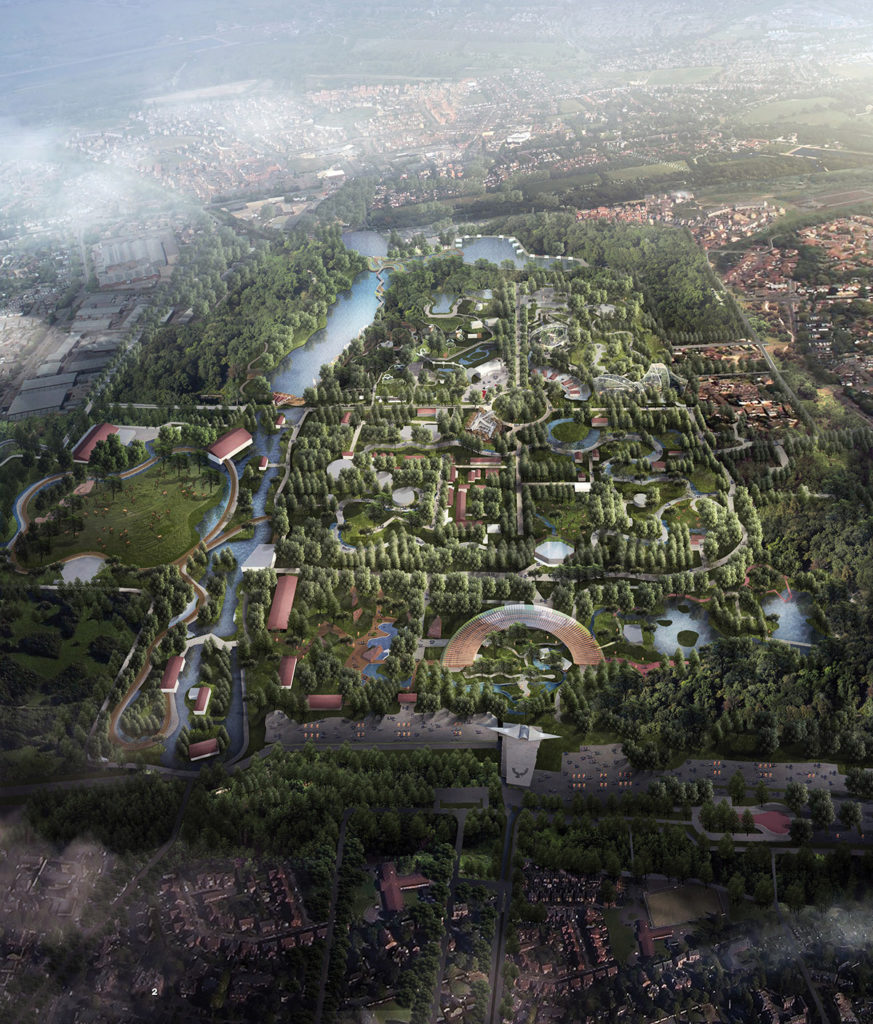Ragunan Bio Park: A Nature-based update of Indonesia’s oldest zoo
September 6, 2022
Spanning 140 hectares in the middle of a densely built-up district in South Jakarta, Ragunan Zoo is one of the city’s oldest and most popular family attractions with an affordable ticket price of around USD0.25 per person, which has not been increased for many years. Pre-pandemic, the holiday season would see a record of 196,000 visitors in one day1 or around 5 million annually,2 which is more than double the numbers of the 107-hectare Bronx Zoo in New York City,3 for example.
However, this popularity—a prime opportunity to educate the masses about wildlife and Nature—is not yet matched by an update in facilities. Compared to wildlife parks or zoos in other major cities, Ragunan Zoo is in poor condition with outdated exhibits and basic infrastructure. Since it was moved to this location in 1966 (it had been established elsewhere in 1864), the zoo has yet to see major renovations aside from routine upkeep.
“[It] is currently more like a recreational park rather than a conservation and education centre,” said Anton Siura, landscape architect/urban planner of the design that won a state competition in March 2019. The competition was held by the Jakarta government to seek ideas for a much-needed rejuvenation of the city’s beloved zoo.
WILDLIFE FIRST
The winning proposal by SIURA and Studio Sae, titled Ragunan Bio Park: Island of Nature, offers an eco-centric transformation of the hardscaped ‘exhibition’ cages into a sanctuary for wildlife and integrated blue-green city infrastructure.
The proposal sought the expertise of environmental and wildlife conservation specialists, alongside a branding consultant, business planner and transport specialist. “Perhaps the concept we offered was the most realistic in terms of possible execution,” said the late architect Ario Andito in an interview.4 “The trend for zoos around the world is to adopt the concept of biodiversity, where animals are ‘king’ … Ragunan Zoo will likewise carry the concept of animal conservation. It shouldn’t just entertain visitors, but animals’ wellbeing must come first. This is the balance that we have to maintain.”
FROM CAGES TO HABITATS



To improve animal welfare, the master plan is based on bioclimatic zones that mimic animals’ habitats as closely as possible, such as forest canopies, forest floors, wetlands, grasslands and caverns. Their placements have been chosen based on the quality of the existing environment, hence keeping disruptive upgrade works to a minimum. These naturalistic areas will allow animals to be immersed in their environments, where visitors will also be able to learn about the rich variety of plants in context. Natural barriers, such as water streams and site contours/height differences, will be used to limit animals’ contact with people.
NATURE AS FOREGROUND

“The conventional paradigm that merely places Nature as a background needs to be changed,” the team wrote in their proposal. Architecture is envisioned to blend into the background, only making constructions necessary when building shelters, planters for trees or vessels for activity. As massive, closed-off buildings are avoided, the design instead prioritises cut-out patterns, canopies and stilted structures on columns.
[This is an excerpt. Subscribe to the digital edition or hardcopy to read the complete article.]
¹ https://www.liputan6.com/bisnis/read/2275785/pengunjung-taman-margasatwa-ragunan-tembus-rekor
2 https://travel.kompas.com/read/2019/12/28/145454127/pengunjung-kebun-binatang-ragunan-diprediksi-meningkat-drastisjelang-tahun?page=all
3 https://www.nydailynews.com/new-york/bronx/bronx-zoo-turns-110-110-nyc-favorite-article-1.417057
4 https://www.merdeka.com/jakarta/wajah-masa-depan-ragunan.html
PROJECT DATA
Project Name
Ragunan Bio Park
Location
Jakarta, Indonesia
Status
Competition winner (First Prize)
Site Area
143 hectares
Client/Owner
Provincial Government of DKI Jakarta
Urban Design Firm
SIURA
Architecture Firm
Studio Sae
Principal Landscape & Urban Designer
Anton Siura
Principal Architect
Ario Andito
Planning Team
Tomy Arief; Alvin Praditya; Koei Hwe Ciang
Wildlife Conservation Specialist
Marsenia Haris
Graphic Design
Adryan Wicaksono
Business Planner
Ari Krismono
Environmental Specialist
Adhitya Ridwan Yulianto
Transport Specialist
Faela Sufa
Visualisation Team
Aegipix
Images
SIURA
RELATED: Revitalised Tebet Eco Park opened as a Green oasis in South Jakarta

Managing interlinkages and advancing SDGs in landscape architecture

Read more stories from FuturArc 3Q 2022 Green Awards: Reinterpretation!

To read the complete article, get your hardcopy at our online shop/newsstands/major bookstores; subscribe to FuturArc or download the FuturArc App to read the issues.
Previously Published Showcase
Contact us at https://www.futurarc.com/contact-us for older commentaries.

